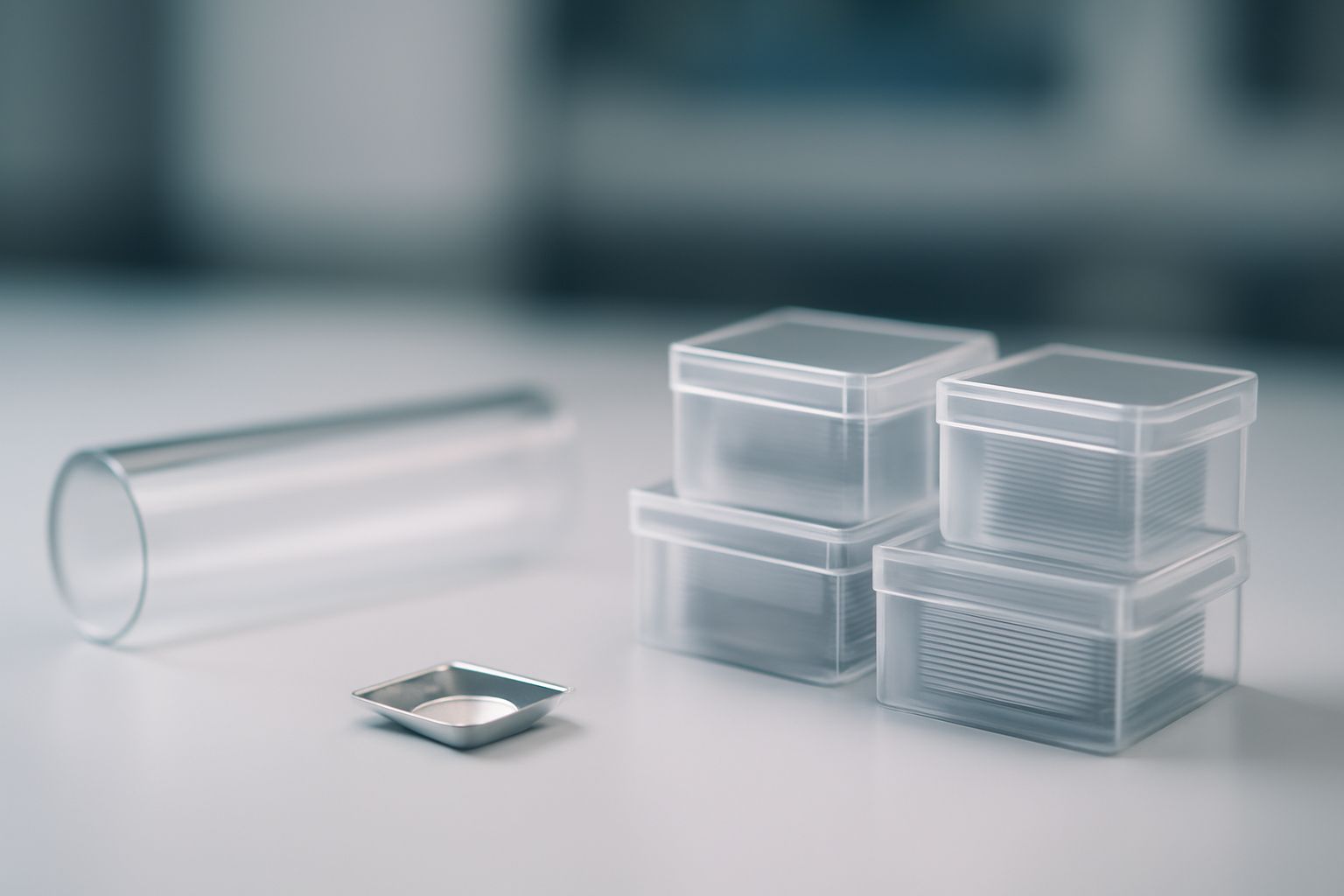Your cart is empty.
shop now
Your cart is empty.
shop now
Incorrect pan selection in polymer DSC wastes samples and weakens results, especially when melting, crystallization, or glass transitions are the focus of the analysis.
Choosing a high-purity aluminum pan for polymer DSC depends on the intended test: melting point, crystallization, glass transition, or sample volume. Pan size and sealing must fit your experiment for valid outcomes.

I help teams select pans for each polymer DSC study by matching the experimental requirement to pan size, sealing, and compatibility. Here are the key points to guide your pan choice for different analysis types and sample amounts.
Unclear or rounded melting peaks make it tough to distinguish polymer quality. Poor pan choice, wrong seal, or mismatched size hides true transition behavior in DSC runs.
For melting point analysis, I use hermetically sealed, small, and flat high-purity aluminum pans. This combination prevents vapor loss and delivers the highest peak sharpness for melting transitions.
| Pan Feature | Reason to Use | Best For | Source |
|---|---|---|---|
| Hermetic seal | Stops loss of volatiles | Low-mass, solvent-rich polymers | Polymer Journal |
| Small, flat shape | Reduces heat lag, sharper melting | Pure or blended polymer powder | ScienceDirect |
| 99.99% pure Al | No side reactions | Diverse polymer libraries | Instrument manual |
I always check pan fit and seal before loading. With small, hermetic high-purity pans, I get clear melting points across all polymer samples in routine and advanced R&D.
Split, broad, or inconsistent crystallization peaks bring doubt to polymer thermal analysis. An ill-fitted or open pan lets gases escape, reducing clarity for additive-heavy or semi-crystalline samples.
For crystallization, I select medium-depth high-purity aluminum pans with semi-hermetic or vented lids that allow gas escape but keep solid samples contained. This reveals sharp exothermic peaks for crystallization events.
| Pan Choice | Lid Style | Advantage | Polymer Target | Resource |
|---|---|---|---|---|
| Medium-depth, 99.99% Al | Vented/semi-hermetic | Prevents pressure build-up | Polymer blend, copolymer | Nature |
| Wide opening | Open or snap-fit | Allows slow cooling | Crystallizable polyolefins | Instrument catalog |
I track onset and area of crystallization peaks across several runs, using pans matched to the specific polymer class. Good venting and size lead to higher data consistency every time.
Weak glass transition (Tg) signals are easy to lose if the pan adds background noise or does not offer tight contact. Many errors in Tg mapping come from pan choices, not polymers.
I use thin-wall, uniform-mass, high-purity aluminum pans for Tg measurement—preferably with easy-press or flat lids. Their even heating and minimal noise give clear baseline steps for weak glass transitions.
| Pan Attribute | Impact on Tg Data | Recommended For | Reference |
|---|---|---|---|
| Thin wall | Rapid baseline response | Non-crystalline samples | ScienceDirect |
| Consistent mass | Precision, reduces scatter | Repeatable QA samples | Lab SOP |
| Flat lid | Fastest ramp rates, cleanest baseline | Routine glass transition mapping | Instrument manual |
I verify wall thickness and mass from pan certifications. Consistency in pan parameters means quality, reproducible Tg results for all routine or problem-study polymers.
Using excess polymer causes overflow; too little gives noisy or low peaks. The volume and internal dimensions of each pan must match typical and specialty sample needs.
For microgram-level samples, I choose small pans (5–20 μL). Bulkier blends with weak transitions require larger-volume high-purity pans. Seal strength affects safety and retention for risky or expanding samples.
| Pan Capacity | Recommended Sample Mass | Polymer Application | Benefit | Source |
|---|---|---|---|---|
| Micro (5–20 μL) | 0.3–2 mg | Expensive or R&D batch | Peak clarity for limited sample | Instrument manual |
| Standard (30–50 μL) | 3–10 mg | Routine QA | Consistent operator handling | ScienceDirect |
| Large (80–100+ μL) | 15–30 mg | Weak/heterogeneous blends | Good S/N, prevents overflow | DSC wiki |
I set sample mass limits and select pans based on polymer type, cost, and expected transition. Good pan practice optimizes data, no matter the polymer or volume.
Adapting high-purity aluminum pan size and sealing to polymer DSC scenarios keeps my thermal analysis sharp, reproducible, and always ready for new material challenges.
Contact technical support: info@redthermo.com